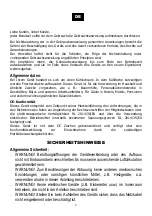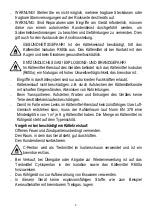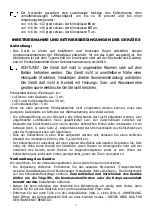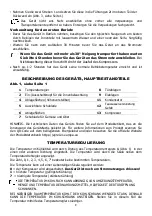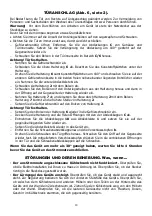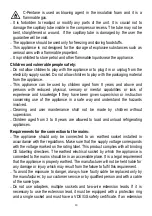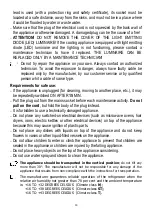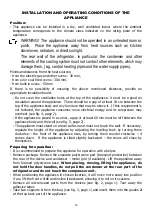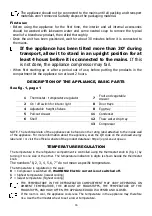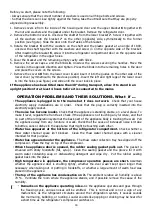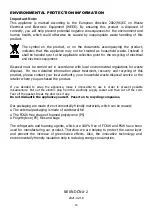
17
INSTRUCTIONS FOR FOOD STORAGE
The most appropriate compartments of theappliance where specific types of food are to bestored,
taking into account different temperaturedistribution in different compartments in theappliance, are as
follows:
1)
Upper area of the refrigerator compartment & door - temperature zone: Store tropical fruit, cans,
drinks, eggs, sauces, pickles, butter, jam.
2)
Middle area of the refrigerator compartment - cool zone: Store cheese, milk, dairy food, deli food,
yoghurt.
3)
Lower area of the refrigerator compartment - coldest zone: Store cold cuts, desserts, meatand
fish, cheesecake, fresh pasta, sour cream, pesto/salsa, home-cooked food, pastry cream, pudding
and cream cheese.
4)
Fruit & vegetable drawer at the bottom of the refrigerator compartment: Store vegetables and
fruits (excluding tropical fruits).
To avoid contamination of food, please respect the following instructions:
-
Opening the door for long periods can cause a significant increase of the temperature in the
compartments of the appliance.
-
Clean regularly surfaces that can come in contact with food and accessible drainage systems.
-
Store raw meat and fish in suitable containers in the refrigerator, so that it is not in contact with or
drip onto other food.
–
If the refrigerating appliance is left empty for long periods, switch off, defrost, clean, dry, and leave
the door open to prevent mould developing within the appliance.
DEFROSTING, CLEANING AND CARE
THE REFRIGERATOR COMPARTMENT DEFROSTS AUTOMATICALLY. Drops of ice that form on the
back wall of the refrigeration compartment thaw during the time the compressor is not working and
the thaw water runs down the thaw water runoff channel to the tray on top of the compressor, where
it evaporates.
REGULARLY CLEAN THE APPLIANCE.
Remember that before cleaning the appliance body you must disconnect the
appliance from the electrical energy supply socket by pulling the plug out of the
electricity outlet.
•
Clean the appliance inner surfaces with warm soapy water. Dishwashing detergent may also be
used. Wipe dry inner and outer surfaces.
•
Regularly clean the hermetic gaskets of the doors. Wipe dry.
•
At least once a year clean dust away from the back part of the appliance body and
the compressor. A soft brush, electrostatic cloth or vacuum cleaner may be used
for cleaning.
•
REGULARLY CLEAN THE THAW WATER CHANNEL SPACE WITH A SPECIAL
CLEANER FOR THAT PURPOSE.
•
DO NOT use detergents containing abrasive particles, acid, alcohol or benzene for
cleaning the appliance inner and outer surfaces. DO NOT use for cleaning cloths or
sponges that have coarse surfaces intended for scrubbing.
CHANGING THE OPENING DIRECTION OF THE DOORS (see fig. 6)
It is recommended that changing the opening direction of the doors should be done with a
helper. You will need two spanners No. 8 and No. 10 and a head screwdriver.
When changing the opening direction of the doors, YOU CAN NOT lay the refrigerator
horizontally!
Warning:
Always disconnect the unit from the mains before any maintenance or repair work is
carried out.
Summary of Contents for KT 2670
Page 2: ...1 KT 2670 KT 3100 KT 2675 ...
Page 3: ...2 ...

